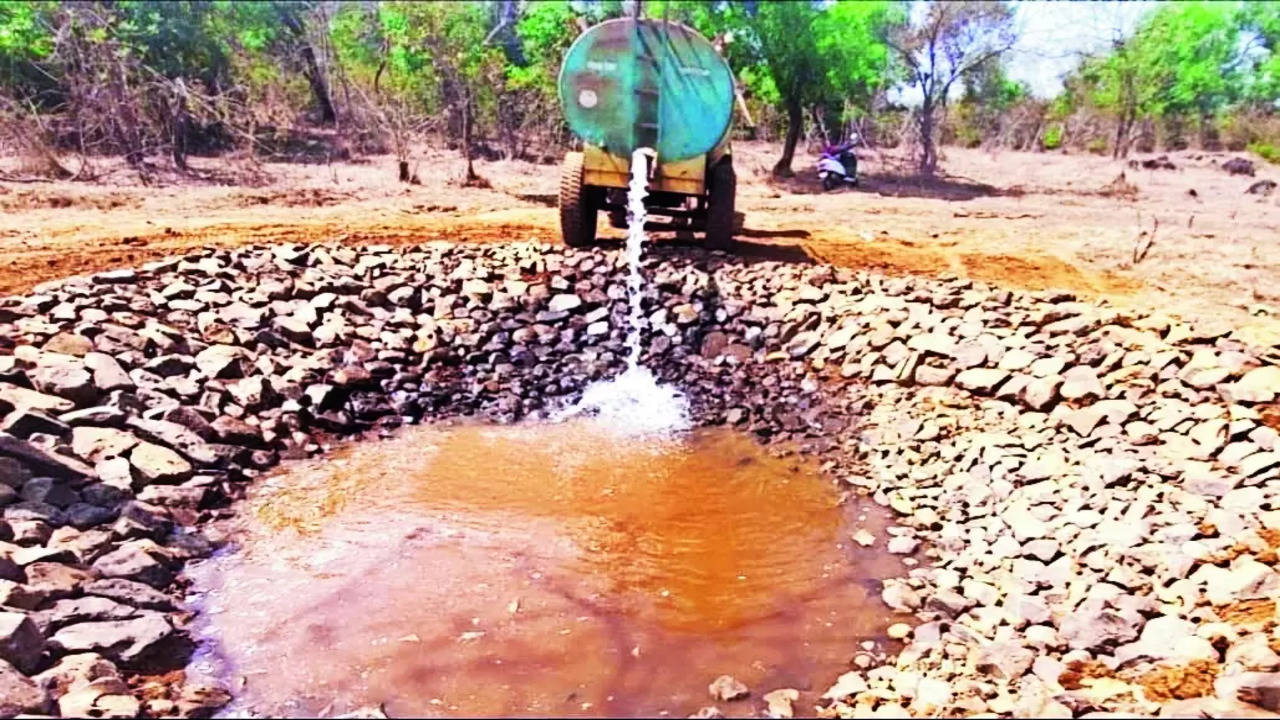Pune: Alongside humans, animals are also bearing the brunt of reducing water levels as a scarcity of the vital resource grips the district. The forest department has said filling up the waterholes for animals to drink from has become a problem due to skyrocketing costs of tankers and shortage of supply to certain sections of the city.There are over 470 waterholes constructed by the forest department across Pune district. Each accommodates 5,000 litres of water, lasting for around 15 days. In total, over the course of two months — till June — over 1,880 water tankers will need to be deployed by the department.However, since these waterholes are situated well within forest patches, tanker suppliers have been demanding extra money for transportation or refusing to provide services at all.Forest officials also said that when it rains on some occasions during the summer season, a few waterholes fill up and remain so for around a fortnight. However, this year, not much rainfall has been experienced across the district, forcing them to make a request for emergency funds.Deputy conservator of forests Mahadev Mohite told TOI, “Every year, we get some funds for this purpose, but we have started requiring more due to the skyrocketing costs this time. As tankers are now not readily available due to a water shortage for housing societies, they are demanding payment of over Rs6,000 for 5,000 litres of water plus transportation costs. They don’t want to travel to areas located deep in forests. It is an expensive affair, but necessary. Tractors are the better option for us to transport water as at least we can utilise them for other purposes as well.”The department has already started deploying tankers to waterholes in Baramati, Daund, Indapur and Saswad and will continue doing so till the monsoon begins.A few villages have also ‘adopted’ some waterholes, providing the funds to supply water to fill them up. Forest officials said this trend is helping them out somewhat, adding that they are seeking more help from other villagers, NGOs and CSR funding, too.Wildlife rescuer Nachiket Awadhani, a member of the RESQ Charitable Trust, shared, “It is necessary for waterholes to be present in more drought-prone areas or grassland patches like Solapur, Daund, etc. Generally, animals tend to survive and adapt by migrating to locations that have more availability of water. However, due to fragmentation of landscapes and breakage in corridors due to human intervention, they no longer even have that option. That is why these waterholes are useful.”Mohite also said new waterholes need to be built each year. He explained, “Some structures get damaged over time and need repair. When they are beyond fixing, we replace or abandon them. We are trying not to use concrete now, as it tends to be slippery and also heats up very fast.”

